PRODUCT
PRODUCT
LATEST NEWS
CONTACT US

Jiangsu headquarters add: No.388 Chuanjiang Road, Economic and Technological Development Zone, Yangzhou City, Jiangsu Province;
Beijing headquarters add: Building 19th in District 7th, No. 188 of South Fourth Ring Road, Fengtai District, Beijing City.
Plate catalyst
Plate-type Catalysts
1. Main Components
▶ Stainless steel mesh as carrier for catalytic materials
▶ Titanium dioxide, vanadium oxide and molybdenum oxide served as active catalytic materials
2. Servicable Range of Plate-type Catalyst
▶ For coal-fired, oil-fired, gas-fired and biomass power plants, especially for those consuming coals with complex components and generating much dust
▶ For factories which generate oxynitride, such as chemical plant, oil refinery, coking plant
3. The Outter Form and Structure of Plate-type Catalysts
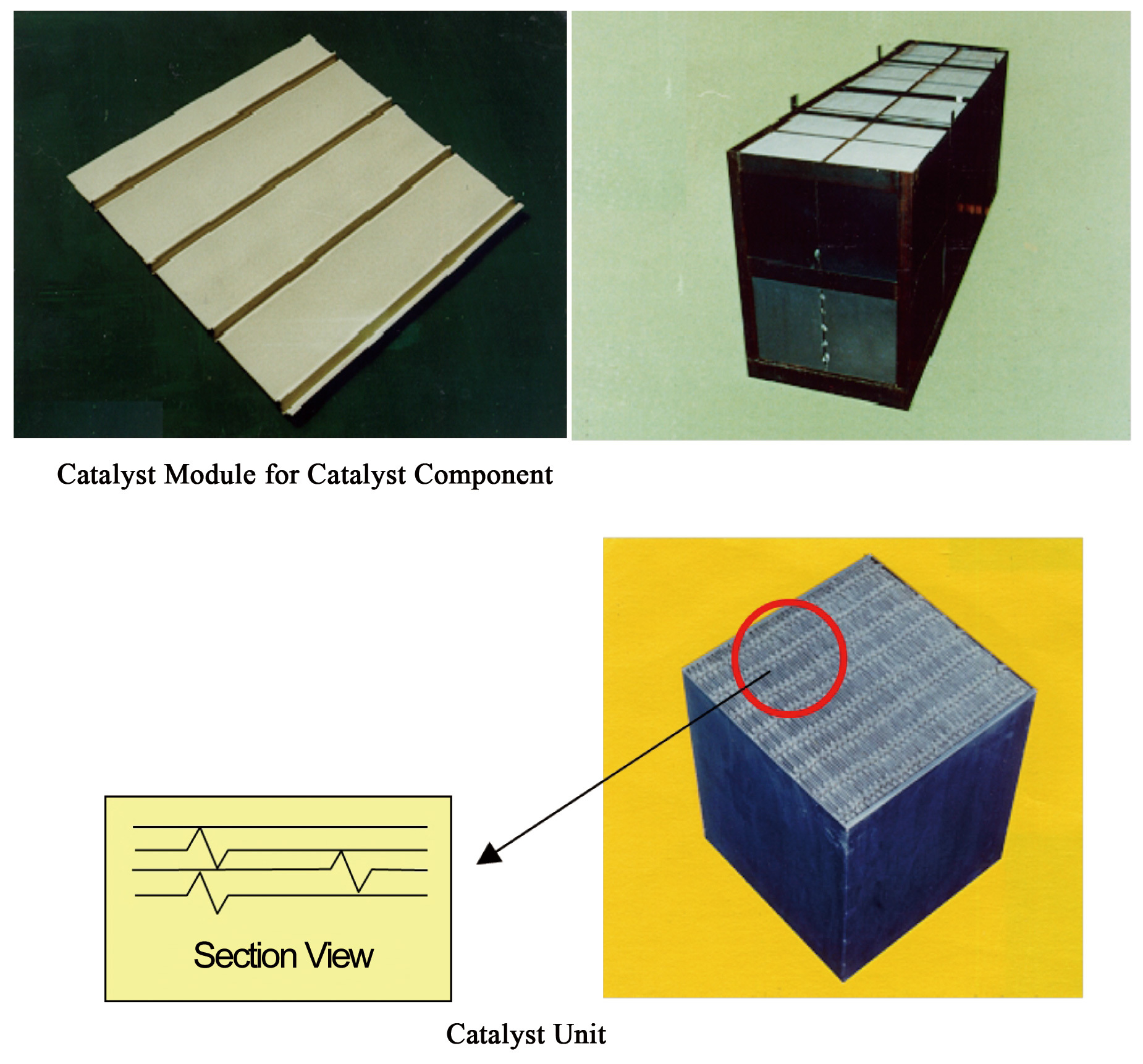
Size of the Single Plate of Plate-type Catalyst: all types of products required by different specifications:
Thickness: 0.6 -0.8 mm; Height: 550mm - 625mm; Depth: 456 mm; Weight: 0.7 kg;
Stard Size for Module:
Length: 1882mm; Width: 954mm; Height: 1200 - 1500mm; Gross Weight: about 1.5 ton
Adjustable Height: In order to meet specific requirements, Wande can adjust the height of single plate of catalysts based on analyses on smoke and dust content.
Adjustable Pitch: Wande provides optimal catalysts in terms of holes, formula and design.

I.Characteristics of Plate-type Catalyst
1.Resistant to Dust Stratification, Blocking and Poisoning
The pitch and flow area of plate-type catalyst are comparatively large, with support of stainless steel mesh. As a result, constant micro-vibrations will be caused by airflow, so as to prevent dust stratification on the surface of catalyst. Consequently, Wande catalysts are highly resistant to dust blocking, stratification and alkali poisoning. Two factors affect dust blocking in catalysts: area with slow flow speed and difficulty level of dust bridging.
Structure of Cutout of Catalysts
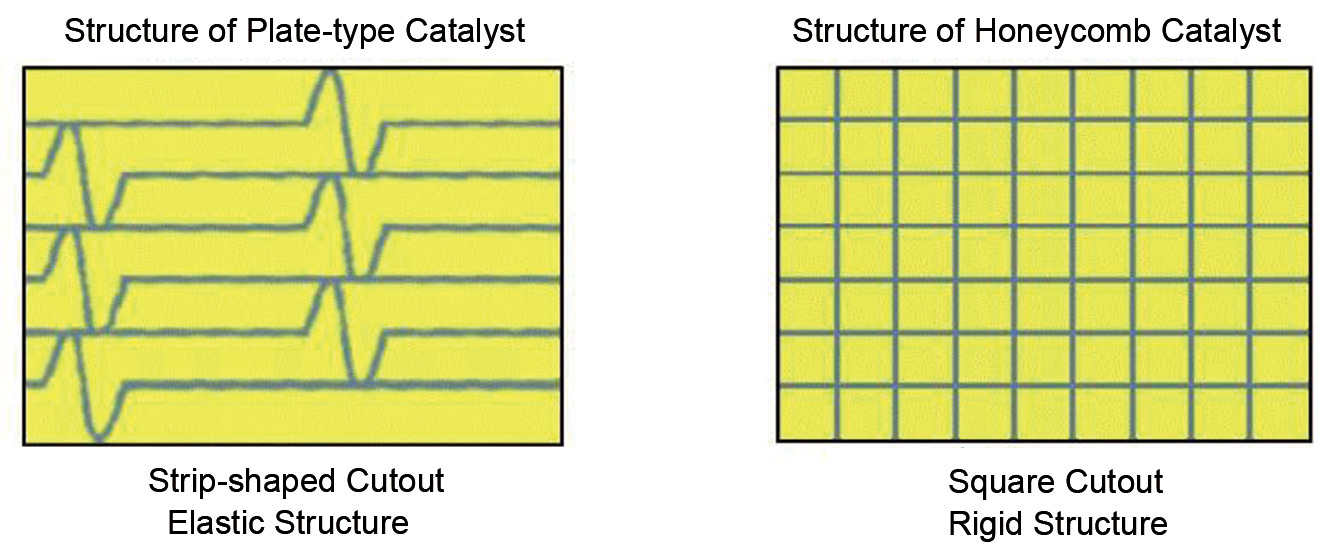
2.Highly Resistant to Abrasion
Plate-type catalysts are supported by stainless steel mesh. With high mechanical strength due to the support, plate-type catalysts can prevent abrasion caused by dust. Little of the active components of plat-type catalysts will be swept off by flying dust in dusty working conditions.
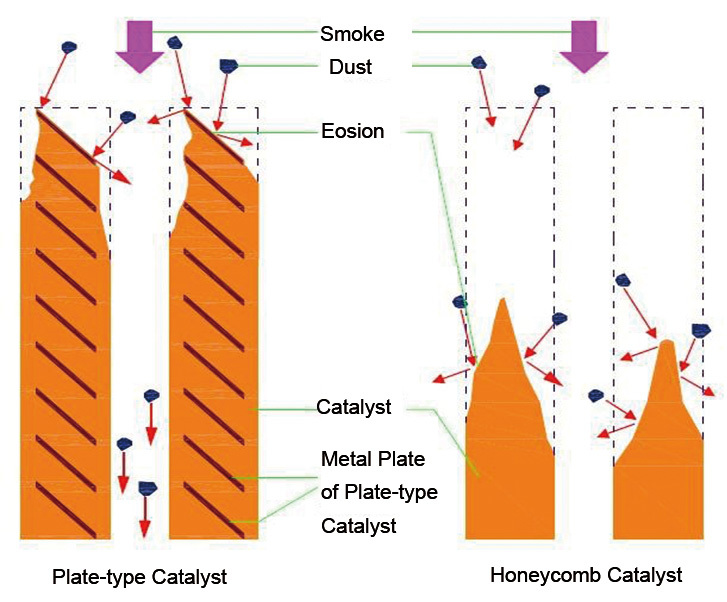
3.Highly Resistant to Chemical Poisoning
Plate-type catalyst enjoys advantages to resist alkaline-earth metals and As2O3. MoO3 is added to the formula of plate-type catalyst. Within the range of SCR reaction temperature, MoO3 and As2O3 will react faster than As2O3 and V2O5. This is why MoO3 efficiently protects V2O5, the major active component of catalysts, and release As poisoning, so as to expand use life of catalysts.
4.Slight Loss by Pressure
For the same NOx removal rate, superficial velocities of reactors and pitches of catalysts, the loss by smoke pressure is comparatively slight.
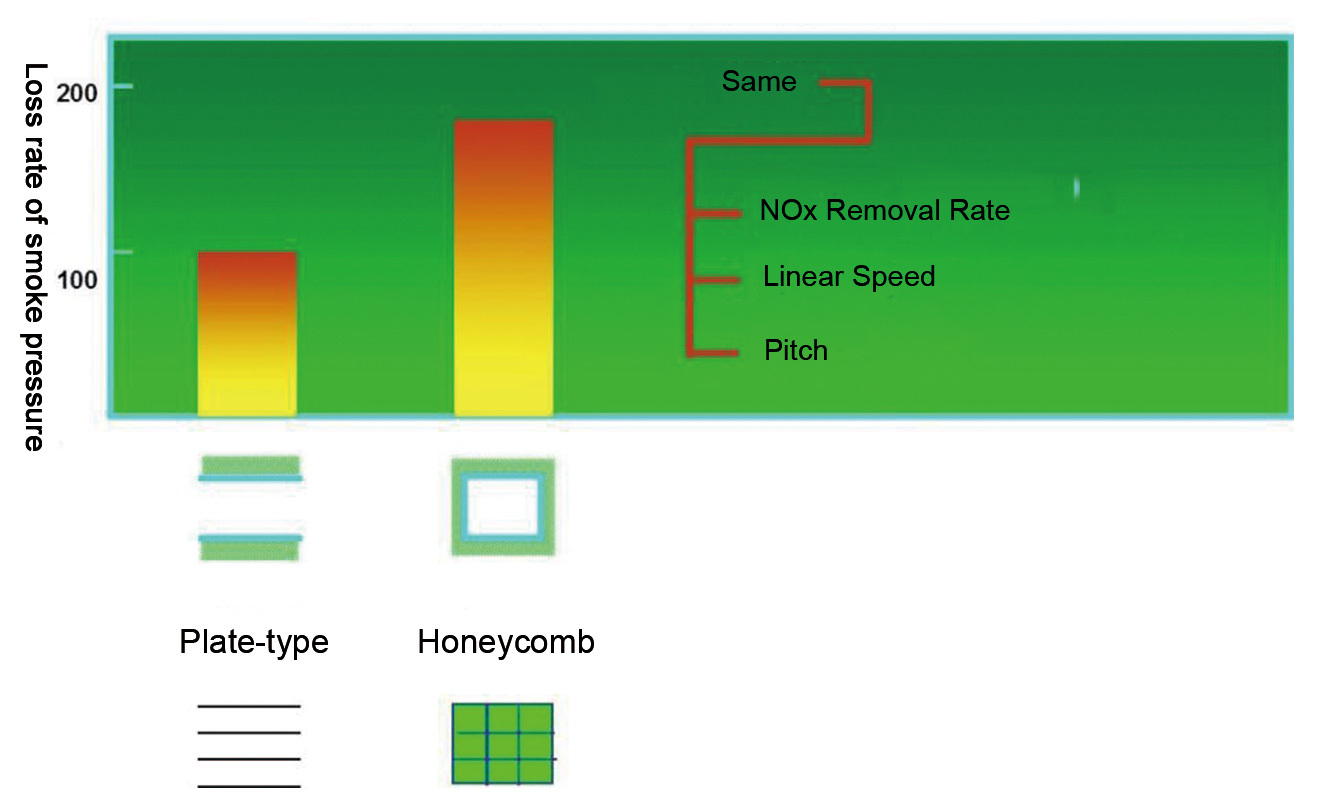
5.Extraordinary Thermal Performance and Mechanical Performance
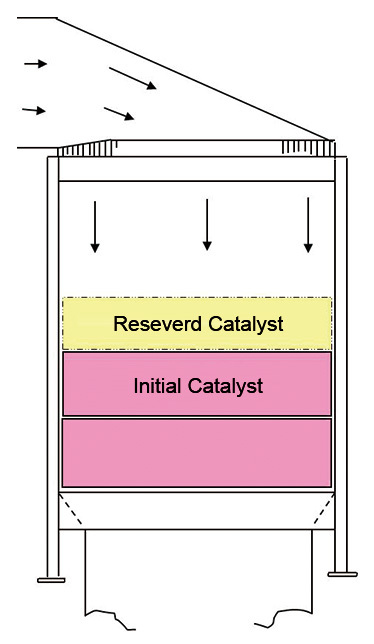
6.Lower SO2 Oxidation Rate
Oxidation of SO2 occurs in catalysts. The catalytic component of plate-type catalysts thinly coats the stainless steel mesh, an approach to limit assure and NOx removal rate (Denitration reaction only occurs on the surface of catalysts). Consequently, the SO2 oxidation rate for plate-type catalysts is lower than that for honeycomb catalysts.
7.Catalysts can be stacked up.
Catalysts can be stacked up so as to reduce the volume.
II.Preparation Process of Plate-type Catalysts
The base material of plate-type catalystsis slim stainless steel mesh coated by active components.
After wrinkling, the mesh will be cut according to requirements and assembled into catalyst unit.
The roasted catalyst unit will be assembled into catalyst module. The following figure shows the process.
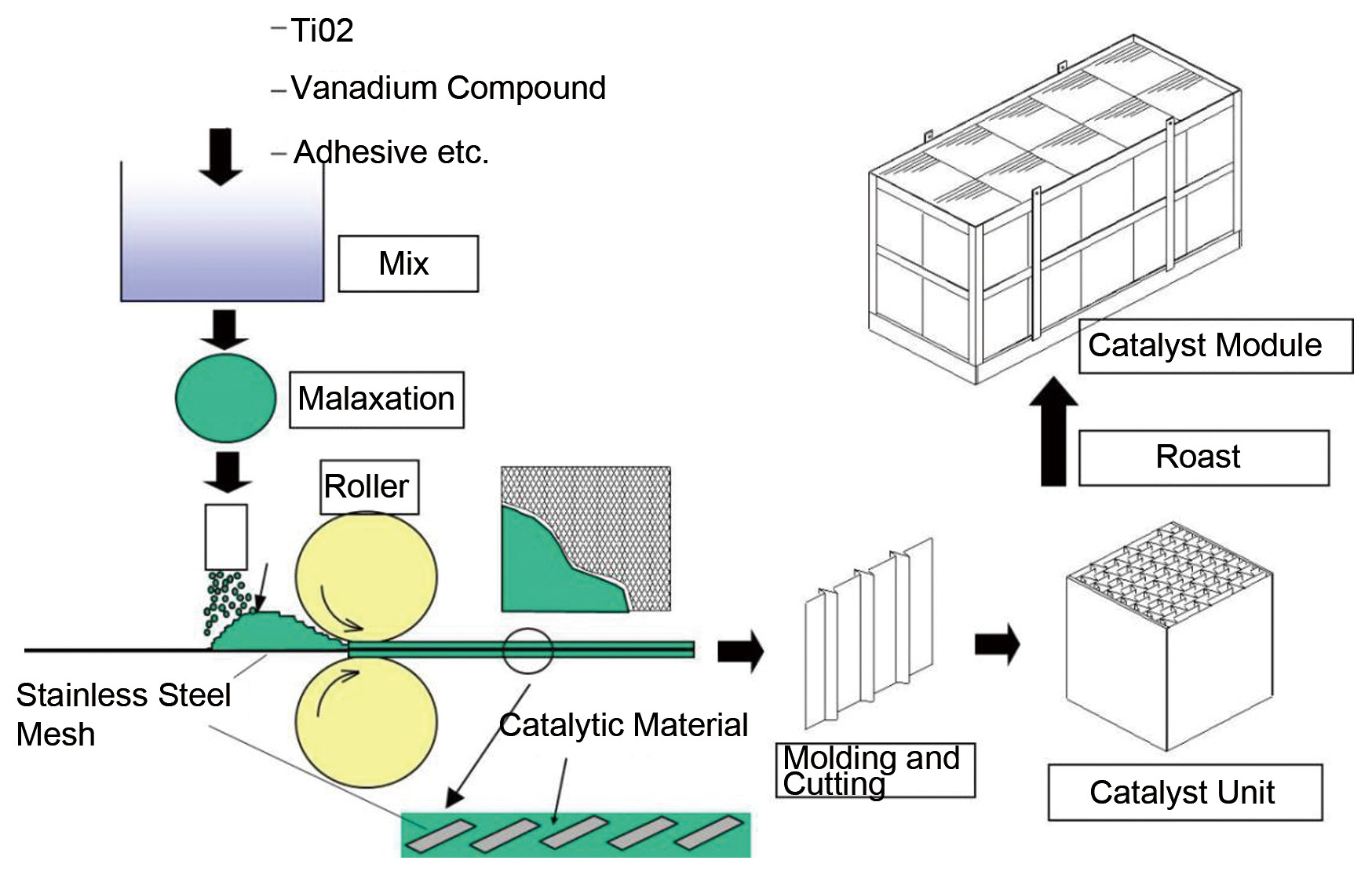
III.Imported Equipment
1.Mixing rolls imported from Loedige (a German company).
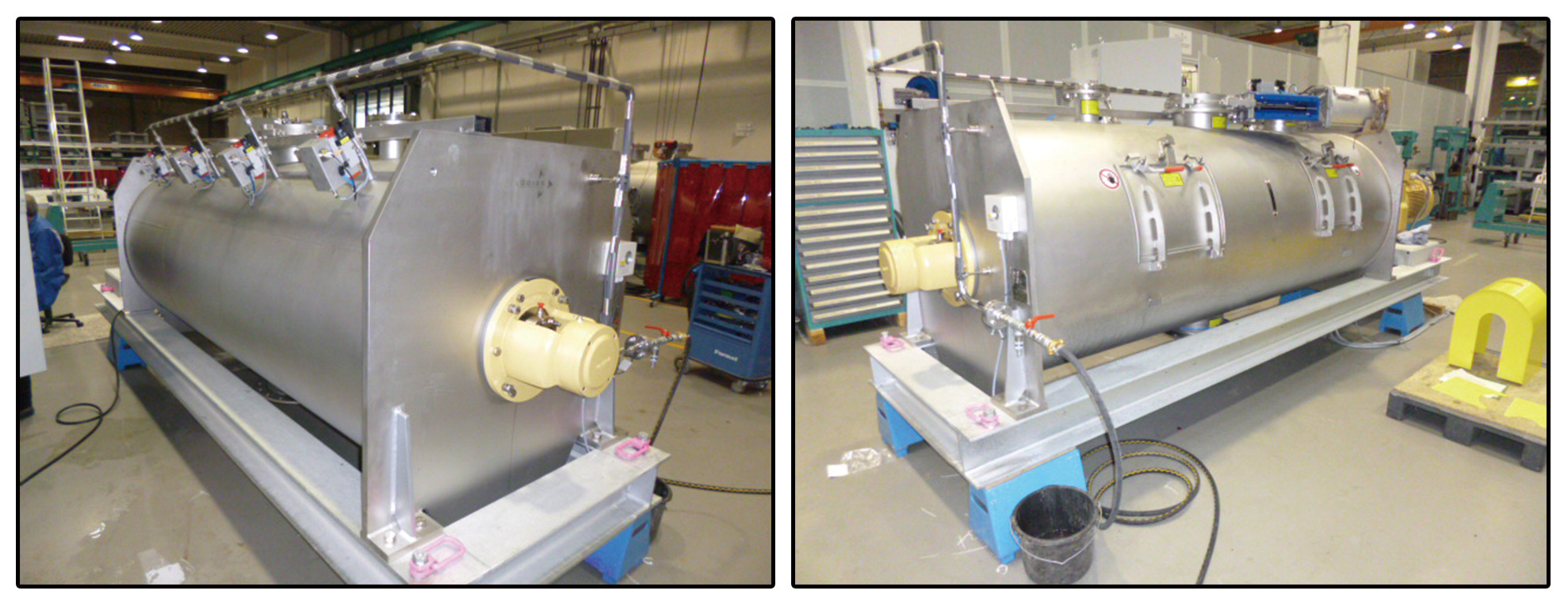
2.Extrude equipment imported from Coperion (a German company).
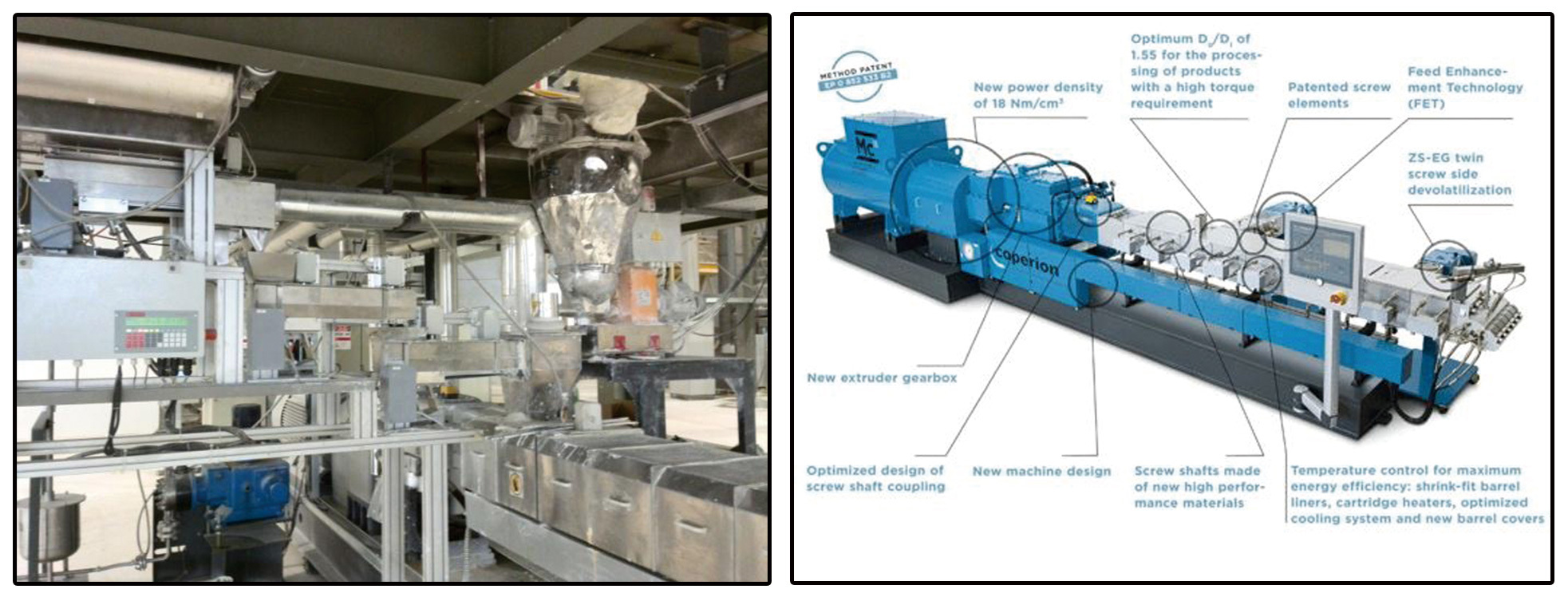
3.Coating machine imported for WEYTEC (a German company).
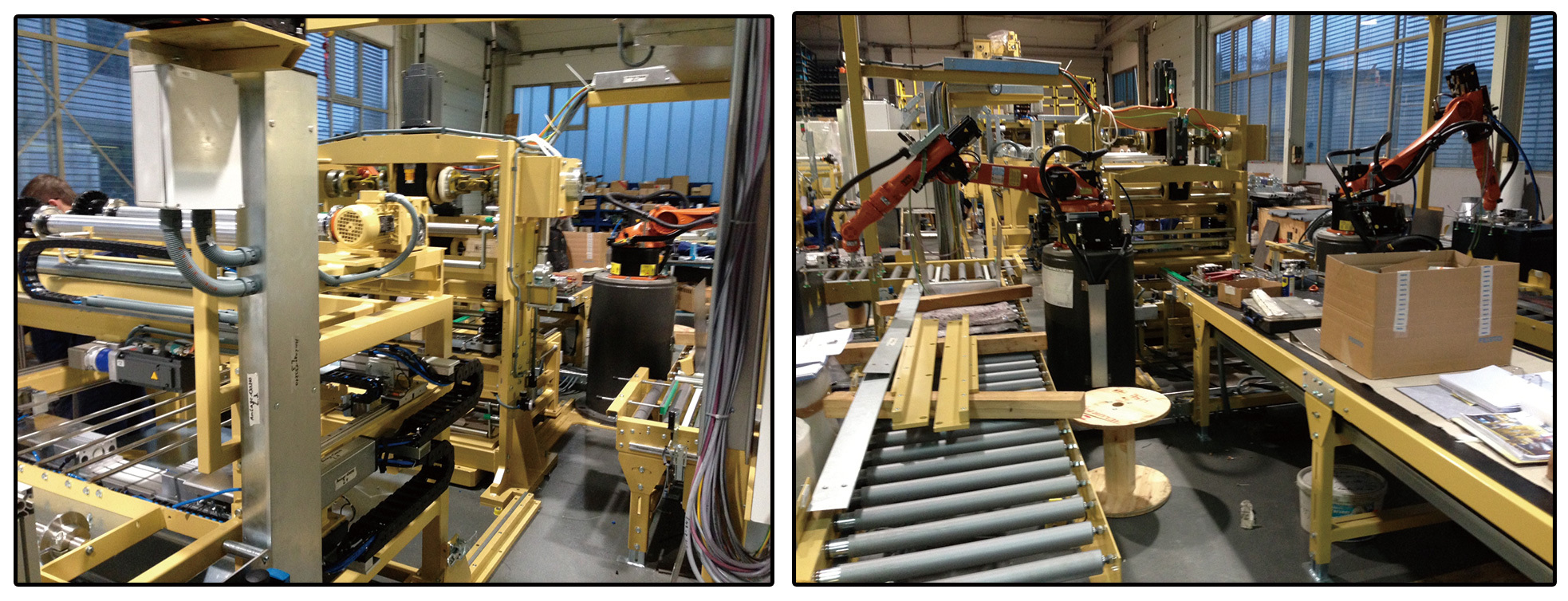
IV.Advantages of Wande Plate-type Catalysts
1.Wande holds proprietary intellectual property rights for plate-type catalyst and its application.
Wande independently developed the plate-type catalyst and has profound knowledge of production process, engineering application and mechanism of plate-type catalyst.
2.All cardinal equipment to produce plate-type catalyst is imported from foreign countries, and applicable to machines provided by Johnson Matthey (German company) so as to assure the world-class quality of plate-type catalysts.
3.Wande is capable to produce and regenerate honeycomb and plate-type catalyst. In terms of this capacity, Wande is the only one producer in China.
4.Wande is capable to design the whole process to produce DeNOx catalysts as well as engineering for denitration of smoke. Wande can provide optimal customized project for customers.







